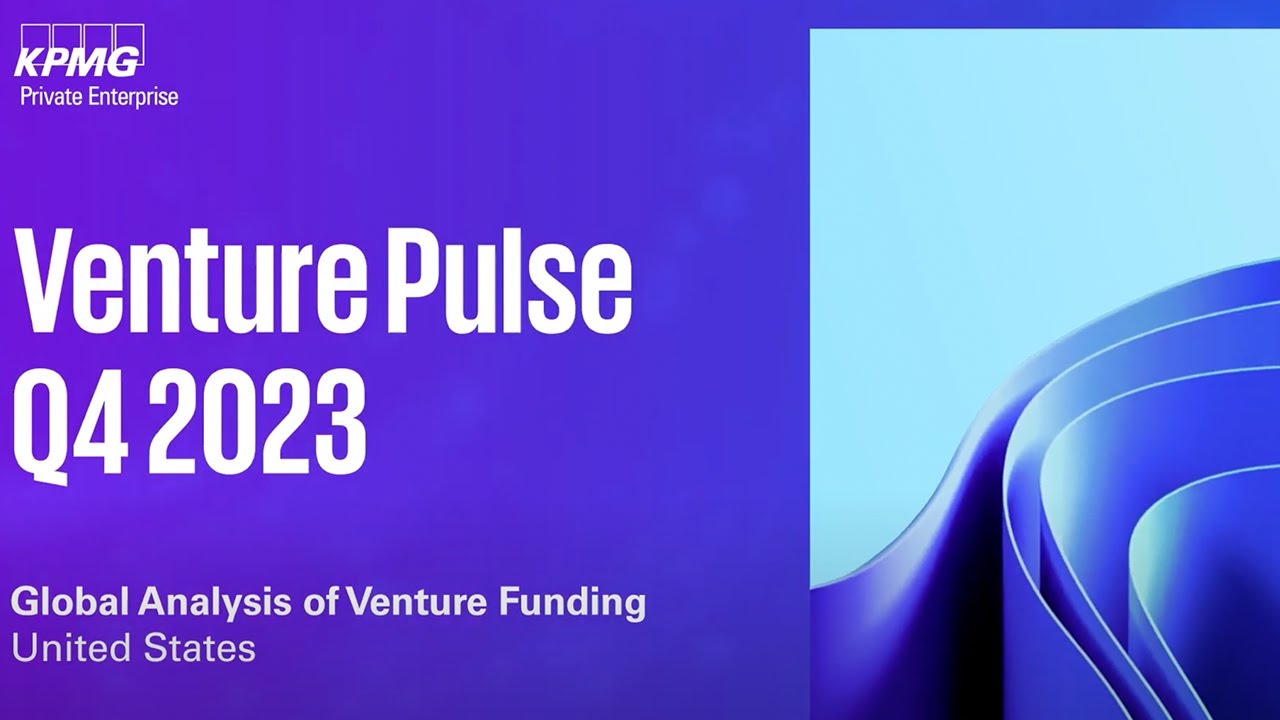Venture Pulse Q4 2023
The Venture Pulse report provides insights around trends, opportunities, and challenges in the U.S. venture capital market.

VC investment in the US declined significantly in Q4’23, driven by geopolitical concerns, the relatively weak post-IPO performance of companies that tested the IPO waters in Q3’23, and significant economic headwinds.
AI sees red-hot interest from VC investors in the US
AI continued to attract an enormous degree of attention from VC investors in the US during Q4’23, with investment flooding into companies operating in the space. Investments in AI were vast and varied, spanning a wide cross section of industries and service offerings. The AI space attracted many of the largest deals in the US during Q4’23, including a $2 billion raise by generative AI and large language model developer Anthropic, a $1.7 billion raise by AI-powered parking platform Metropolis, a $684 million raise by AI-powered data analytics platform Databricks, and a $323 million raise by neurotech company Neuralink.
AI deals will not completely reverse the drop in VC investment that has been seen in 2023 but will definitely help mitigate some of the challenges. What I am most looking forward to is the impact that AI will have on non-AI companies as they prioritize cost and profitability. I sense it will be helpful but it could be game-changing.
Conor Moore
Global Head, KPMG Private Enterprise
Flat and down rounds becoming the norm
During Q4’23, the prevalence of flat and down rounds continued to grow in the US, with numerous companies required to take cuts to their valuations in exchange for fresh funding. In the current market, a number of startups that raised flat rounds considered it a positive achievement. Flat is absolutely the new “UP’.
VC firms facing pressure from LPs
As much as VC investors in the US continued to put a significant amount of pressure on companies within their portfolio to conserve cash, extend the value of every dollar, and right-size their business during Q4’23, VC funds also came under pressure from their LPs to provide returns given institutional commitments. This pressure could push funds to begin deploying their dry powder, although any deployment of capital will likely be combined with serious discussions around planned exit strategies.
IPO market remains shuttered despite Q3’23 IPOs
There was some hope that the three major IPOs that occurred during Q3’23 — including US-based companies Instacart and Klaviyo, in addition to UK-based Arm — would lead to additional companies making IPO exits in Q4’23. The IPO and post-IPO performance of these companies, however, was not enough to start even a trickle of additional IPO activity. This result is casting a significant pall on expectations of a recovery in the IPO market during the first half of 2024; despite companies working to improve their IPO readiness and the possibility of one or two major IPO exits, it is possible that any significant reopening of the US IPO market will likely occur in the latter half of 2024.
The Q3’23 IPOs, however, did provide a indicator for private company valuations; this contributed to a growing alignment between the expectations of founders and investors during Q4’23 as to the true valuation of private companies. This could foster additional deal making heading into Q1’24.
Bay Area shows the most resilience compared to other US startup hubs
On a regional level, the Bay Area showed the most resilience in 2023 with respect to VC investment, compared to 2022. While VC investment in the Bay Region increased from $33.7 billion to $41.4 billion year-over-year, other areas faired poorly. Hardest hit were Seattle and Denver which both dropped over 65 percent year over year followed by New York (50 percent decline), Philadelphia (37 percent decline) and Boston (13 percent decline).
The resilience of the Bay Area likely reflects a number of trends, including the significant investment in AI-focused companies — many of which are based in the Bay Area — and the presence of a number of highly valued private companies that had to put their IPOs on hold during 2023 and so raised large mega-deals to help bridge the gap.
VC firms using rollover funds in order to extend the life of VC funds
Given the incredibly dry exit environment, a number of VC funds began to consider or introduce rollover funds during Q4’23 in order to carry over their investments from aging funds in order to extend the runway needed to bring companies within their portfolio to successful exits. These rollover funds are being used as a means to give some LPs an opportunity to exit because of the length of time the funds have been invested in certain companies. While relatively new for VC firms, rollover funds have been used quite regularly in the PE market.
In 2024, there’s likely going to be growing pressure from VC funds for startups to get out there. We’re going to start seeing more startups getting ready for IPOs, and some testing the IPO waters. Any full reopening, however, is not necessarily going to be quick, particularly because of upcoming US and UK elections. 2025 is more likely when we’ll really start to see the markets opening up again.
Francois Chadwick
Partner, KPMG Private Enterprise
Trends to watch for in Q1’24
VC investment in the US is expected to remain subdued heading into Q1’24 as investors continue to conduct a significant amount of due diligence on deal opportunities and prioritize investments in companies with robust unit economics and sustainable business models given the current business climate.
AI will likely remain a key exception, with VC investors in the US expected to continue to pour money into the space during Q1’24. Longer term, VC investment will likely begin to focus more on companies with true AI offerings as opposed to companies providing AI wrappers to existing technologies or solutions. Solutions focused on the enterprise AI space will likely also increasingly attract attention as businesses across industries look to integrate AI into their operations in order to enhance their human workforce and drive efficiencies.

Key insights from Venture Pulse Q4 2023
In the U.S. in Q4’23
1
2
3
4
5
Dive into our thinking:
Venture Pulse Q4 2023
Download PDFQ4’23 Venture Pulse Report – Global trends
A global overview of key findings uncovered from the Q4’23 Venture Pulse Report.
LinkedIn Live Event: How should private companies navigate the AI boom?
Hear KPMG Private Enterprise professionals discuss highlights from the latest Venture Pulse Report.
About the Pulse Series

Explore more

Embedding GenAI into the workforce
Explore the four key areas private company leaders will want to consider when embedding GenAI into the workforce.

The power of culture for high growth companies
Understanding the role of culture for high growth companies

New expectations for companies looking to IPO
Key factors to consider when companies are thinking about going public
Meet our team
